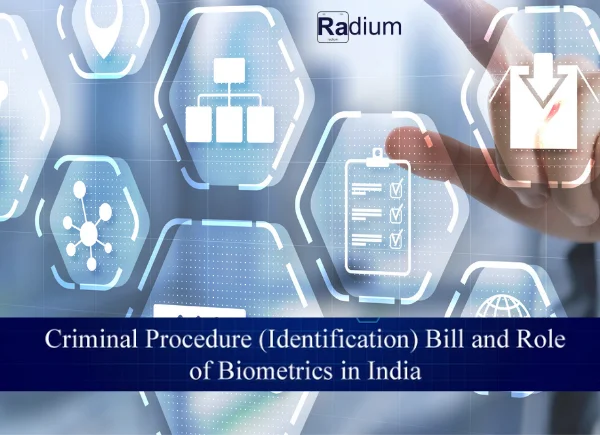
The Criminal Procedure (Identification) Bill was passed by voice vote in the Lok Sabha on April 4th. After union home minister Amit Shah addressed all concerns voiced by MPs regarding the law, the bill that seeks to replace the Identification of Prisoners Act of 1920 was passed. He said that "Old methods cannot be used to combat next-generation crimes. We have to strive to bring the criminal justice system into the next era."
The bill makes it legal for police and prison officials to collect, store, and analyze physical and biological samples from convicted criminals, including the retina and iris scans. According to the bill, the record of measurements will be kept for 75 years from the date of collection.
The disputed draught provides a legal collection of behavioral characteristics such as signatures, handwriting, or any other examination referred to the offenders under Section 53 or Section 53A of the Criminal Procedure Code.
According to the law, if the offenders oppose taking the measurements, they would be charged with an offense under Section 186 of the IPC (obstructing a public servant), which entails a three-month jail sentence, a fine of 500 rupees, or both.
People who have not been convicted or arrested for crimes against women or children, or who are in detention for a felony that is punishable for less than seven years, can refuse to offer their biological samples, according to the authorities.
These rules, according to Union Home Minister Amit Shah, will only be applied in circumstances of "heinous crimes." He went on to say that the bill's rules will include a similar explanation. The legislation, he claims, is intended to "strengthen law and order as well as the country's national security."
The bill is intended to include technological advancements in the field of biometrics, which will result in a higher conviction rate, which is now at an all-time low. Since the use of biometric testing and retinal scans has been legalized in the United States, the conviction rate has increased to 92%. The major goal of the Criminal Procedure (Identification) Bill is to allow us to use modern tools that technology has provided to aid in crime prevention and detection through biometrics. This Act will make it easier for law enforcement to recognize and detect criminals.
|
1920 Act |
Changes in the 2022 Bill |
|
Data permitted for collection |
|
|
Fingerprints, foot-print impressions, photographs |
Additions: (i) biological samples, and their analysis, (ii) behavioral attributes including signatures, handwriting, and (iii) examinations under sections 53 and 53A of CrPC (includes blood, semen, hair samples, and swabs, and analyses such as DNA profiling) |
|
Persons whose data may be collected |
|
|
Convicted or arrested for offenses punishable with rigorous imprisonment of one year or more. Persons are ordered to give security for good behavior or for maintaining peace. The magistrate may order in other cases collection from any arrested person to aid criminal investigation. |
Convicted or arrested for any offense. However, biological samples may be taken forcibly only from persons arrested for offenses against a woman or a child, or if the offense carries a minimum of seven years imprisonment. Persons detained under any preventive detention law. On the order of the Magistrate, from any person (not just an arrested person) to aid the investigation. |
|
Persons who may require/ direct collection of data |
|
|
Investigating officer, the officer in charge of a police station, or of rank Sub-Inspector or above |
Officer in charge of a police station, or of rank Head Constable or above. In addition, a Head Warder of a prison |
|
Magistrate |
Metropolitan Magistrate or Judicial Magistrate of first class. In the case of persons required to maintain good behavior or peace, the Executive Magistrate |
Sources: The Identification of Prisoners Act, 1920, The Criminal Procedure (Identification) Bill, 2022
One of the most remarkable ways to solve a crime is through biometrics. It is an automated method of determining a person's identity based on physical characteristics (fingerprint, face, hand/finger geometry, iris, retina, ear, etc. ), behavioral characteristics (signature, voice, gait, odor, etc. ), and biological characteristics (blood, semen, hair samples, and swabs, and analyses such as DNA profiling). Biometric technology aids in criminal detection by linking traces with people in the database, grading their identities, and identifying subgroups of people from whom the trace may have originated.
In crime detection, authentic and reliable identification is critical. Biometric recognition is gaining traction as a scientifically sound tool in investigative procedures. It has the capability of resolving criminal acts.
Radium Box believes that because of the increased variety of criminal activities and developments in biometric technology, biometrics will play a larger role in crime detection in the future.
